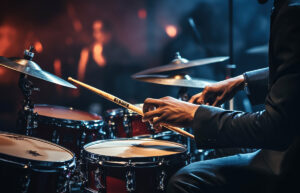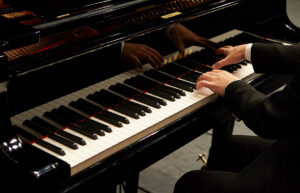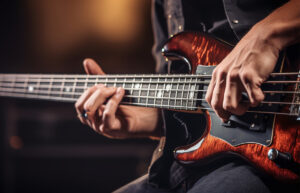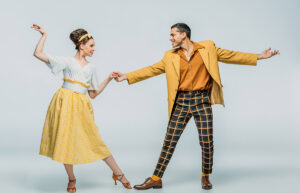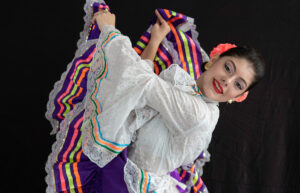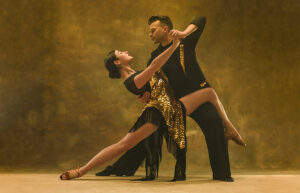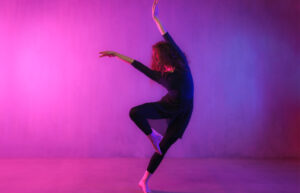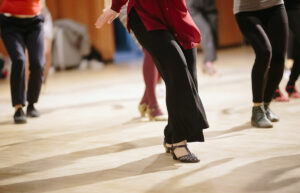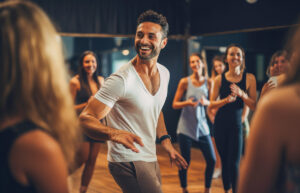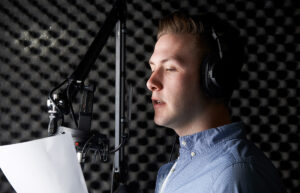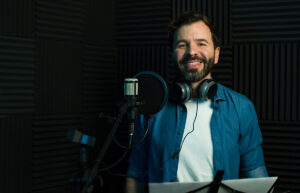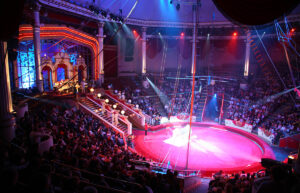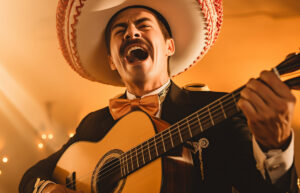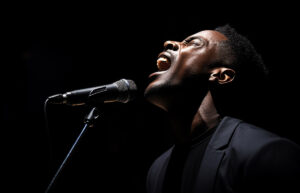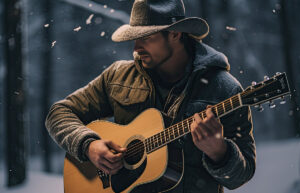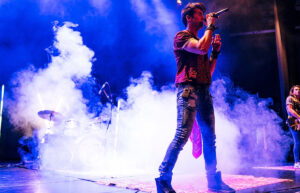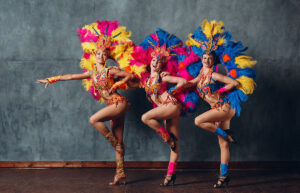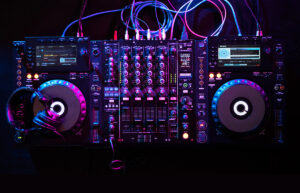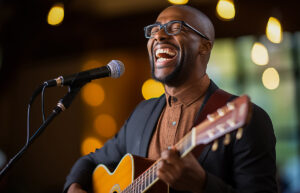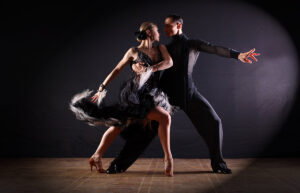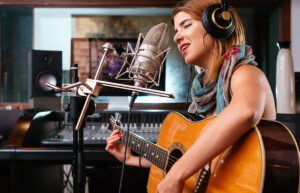How to Slow Dance: Meaning, Steps, Techniques & Tips

Welcome to the world of slow dancing! Picture yourself in a dimly lit room, surrounded by the gentle sway of couples lost in the moment’s magic. Join us as we explore how to slow dance and the art of moving in sync with your partner to the rhythm of the music.
Welcome to TheDemoStop, now join the community!
Connect with artists, fans and producers around the world.
What is slow dancing?
Slow dancing is a style of partner dancing characterized by gentle movements performed to slow-tempo music. It often involves couples holding each other closely while moving in harmony to the rhythm of the music. It is a popular choice of dance form for couples at events like weddings, proms, and romantic evenings, as it allows for intimate connection and expression through movement.
How to slow dance?
Escort your partner gracefully
The first thing to learn about how to slow dance is to approach your partner with confidence and politely request their hand for the dance. Lead them gracefully to the dance floor upon their agreement, ensuring your movements are considerate and gentle.
Dance position
Stand facing your partner, with your bodies close but not too tight. For the classic closed position, the lead’s right hand holds the follower’s left hand, while the lead’s left hand rests on the follower’s shoulder blade. However, the follower’s right hand rests lightly on the lead’s shoulder or upper arm. Maintain good posture and keep your elbows slightly bent to allow for flexibility in movement.
Listen to music and find the beat
Take a moment to tune in to the music playing. Feel the rhythm and listen for the beat. Slow dancing typically follows a 4/4 time signature, so count 1-2-3-4 in your head or tap your foot lightly to stay in sync with the music.
Basic step
Start with a simple side–to–side or swaying motion, shifting your weight from one foot to the other in time with the music. You can also incorporate a gentle rocking motion or small steps forward and backwards. The key is to keep the movements relaxed, allowing you and your partner to move together effortlessly.
Spice it up with a turn
Once you’ve established a comfortable rhythm, you can add some variety to your dance by introducing a turn. Lead your partner into a gentle spin, either by guiding them with your hand or signaling with your body movement. Ensure the turn is smooth and controlled, keeping your partner’s comfort and safety in mind.
End with a dip
As the dance comes to a close, you can add a romantic flourish by ending with a dip. Communicate with your partner to ensure they’re comfortable with this move, and then gracefully lower them backward, supporting their weight securely. Keep your movements slow and controlled, and don’t forget to maintain eye contact and a warm smile to enhance the romantic atmosphere.
Basic techniques for slow dancing
Swaying and movement
- Mastering the sway: Slow dancing is all about the sway, that gentle side-to-side movement that flows with the rhythm of the music. Practice shifting your weight smoothly from one foot to the other, allowing your body to naturally follow the music’s tempo. Keep your movements relaxed and fluid, avoiding any stiffness or tension.
- Moving in sync: The key to a seamless slow dance is synchronizing your movements with your partner. Focus on maintaining a comfortable distance and mirroring each other’s sway. Pay attention to subtle cues like changes in direction or pace, and adjust your movements accordingly to stay in harmony with your partner.
Leading and following
- Lead techniques: If you’re taking the lead in the dance, it’s essential to communicate your intentions clearly and confidently. Use gentle but firm pressure with your hands to guide your partner’s movements, indicating changes in direction or rhythm. Lead with your body as well, using subtle shifts in weight and movement to convey your intentions.
- Following cues: As the follower, your role is to stay attuned to your partner’s lead and respond accordingly. Focus on maintaining a light connection with your partner’s hands and staying receptive to their movements. Anticipate their cues and allow yourself to be guided through the dance, adjusting your steps and sway to match theirs.
Tips for enhancing the experience
Choosing the right attire
Select clothing that complements the occasion and allows for ease of movement. Opt for attire that makes you feel confident and reflects your personal style, whether it’s elegant formal wear for a special event or casual attire for a more relaxed setting.
Dressing for free movement
Choose fabrics that feel comfortable against your skin and allow for unrestricted movement. Ensure that your clothing fits well and doesn’t restrict your range of motion, allowing you to dance freely and confidently.
Shoes and footwear selection
Choose footwear that is both stylish and practical for dancing. Opt for shoes with low or moderate heels that provide stability and support, especially if you’re not accustomed to dancing in heels. Consider shoes with cushioned insoles to keep your feet comfortable and secure while dancing.
Welcome to TheDemoStop, now join the community!
Connect with artists, fans and producers around the world.
Communication and connection
Focus on building a strong connection with your partner through open communication and attentive listening. Be responsive to your partner’s cues and preferences, and communicate your own effectively. Share your thoughts, feelings, and intentions openly to foster trust and understanding between you.
Eye contact and body language
Maintain eye contact with your partner throughout the dance to enhance the sense of connection and intimacy. Use your body language to convey warmth, affection, and engagement, whether it’s through gentle touches, subtle movements, or facial expressions. Pay attention to your partner’s cues and respond accordingly to maintain a harmonious dance experience.
Verbal and nonverbal communication
Utilize both verbal and nonverbal communication to express your feelings and intentions. Use words to communicate clearly and directly, whether it’s to offer compliments, express gratitude, or provide feedback. Additionally, rely on nonverbal cues such as facial expressions, gestures, and touch to convey emotional nuances and deepen your connection with your partner.
Conclusion
What is slow dancing?
Slow dancing is an intimate form of partner dancing characterized by gentle movements performed in close proximity to slow-tempo music.
How to slow dance?
- Escort your partner gracefully
- Dance position
- Listen to music and find the beat
- Basic step
- Spice it up with a turn
- End with a dip
Basic techniques for slow dancing
- Swaying and movement
- Leading and following
Tips for enhancing the experience
- Choosing the right attire
- Dressing for free movement
- Shoes and footwear selection
- Communication and connection
- Eye contact and body language
- Verbal and nonverbal communication
FAQs
What is slow dancing?
Slow dancing is a romantic partner dance where couples move slowly in close proximity to soft music, typically at a gentle tempo.
Can I learn slow dancing on my own?
Yes, you can learn slow dancing on your own with practice and instructional resources.
What are the basic techniques of slow dancing?
- Swaying and movement
- Leading and following
Do I need a partner to learn slow dancing?
No, you can learn the basic steps of slow dancing on your own, but practicing with a partner can help refine your technique and coordination.
What are common mistakes to avoid in slow dancing?
Common mistakes to avoid in slow dancing include stepping on your partner’s feet, tensing up while dancing, leading or following too forcefully, and losing rhythm with the music.
What type of music is best for slow dancing?
Soft and melodic music with a slow tempo and romantic lyrics is considered the best music for slow dancing.
How can I make slow dancing more enjoyable?
To make slow dancing more enjoyable, focus on maintaining a strong connection with your partner, communicate openly, and let yourself get lost in the music and the moment.



